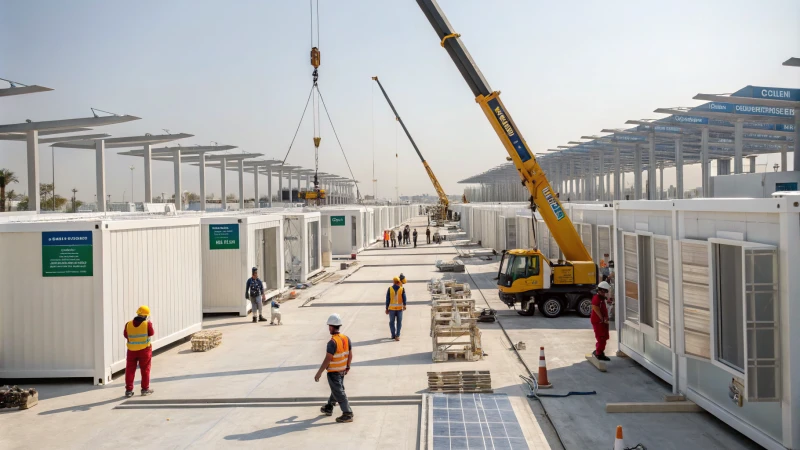
Curious about the latest trends in building and construction? You’ve come to the right place!
The key trends in product markets for building and construction include a shift towards sustainable materials, the rise of prefabrication, and the integration of smart technologies. These elements are transforming how projects are designed and executed, leading to increased efficiency and eco-friendliness.
To delve deeper into these trends and understand their implications for your projects, keep reading as we explore each aspect in detail.
How is Sustainability Influencing Product Choices in Construction?
Sustainability is transforming product choices in construction. This shift is driven by environmental concerns, regulatory pressures, and evolving consumer preferences. Let’s explore how these factors are influencing decisions in the industry.
Sustainability influences product choices in construction by promoting eco-friendly materials, innovative practices like prefabrication, compliance with regulations, and adapting to consumer preferences for green solutions.
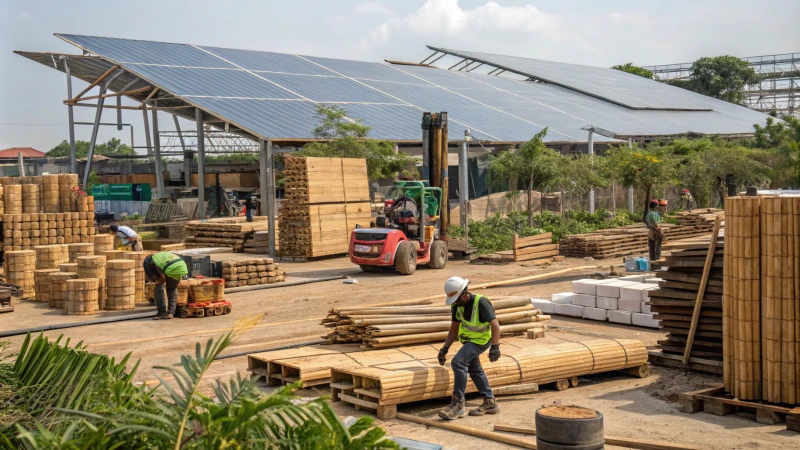
The Role of Sustainability in Material Selection
Sustainability is reshaping the way materials are selected for construction projects. This shift is driven by a combination of regulatory pressure, consumer demand, and the realization that sustainable practices can lead to long-term cost savings.
For instance, the use of recyclable materials1 like aluminium profiles not only reduces environmental impact but also enhances energy efficiency in buildings. With eco-friendly materials, companies can improve their sustainability ratings and appeal to a growing market of environmentally-conscious consumers.
Innovations in Sustainable Construction Practices
The construction industry is witnessing a surge in innovative practices aimed at enhancing sustainability. Techniques such as prefabrication and modular construction allow builders to minimize waste and improve energy efficiency. By utilizing smart building technology2, construction companies can integrate systems that reduce energy consumption and improve overall building performance.
| Practice | Benefits |
|---|---|
| Prefabrication | Reduces waste and improves assembly efficiency |
| Modular Construction | Allows for easy transportation and quick assembly |
| Smart Building Integration | Enhances energy efficiency through automation |
Regulatory Influence on Product Choices
Government regulations increasingly mandate sustainable practices in construction, compelling companies to adopt eco-friendly materials. Policies promoting green building certifications3 like LEED (Leadership in Energy and Environmental Design) encourage builders to consider the environmental impact of their product choices.
As these regulations evolve, construction firms must adapt their procurement strategies to comply with sustainability standards, which can also lead to competitive advantages in the market.
The Impact of Consumer Preferences
Today’s consumers are more informed and concerned about sustainability than ever before. This shift in consumer preferences significantly influences product choices in construction. Builders are now faced with the challenge of meeting client demands for sustainable solutions4.
To attract clients, companies must demonstrate their commitment to sustainable practices through the use of environmentally-friendly materials, energy-efficient designs, and transparent sourcing methods. Engaging with consumers on sustainability can also foster brand loyalty and reputation.
The Future of Sustainable Materials in Construction
Looking ahead, the trend toward sustainability in construction is set to continue growing. Innovations such as bio-based materials and advanced recycling technologies will likely play a crucial role in shaping the future landscape of the industry. By investing in research and development for sustainable technologies5, companies can position themselves as leaders in this rapidly evolving market.
In summary, sustainability is profoundly influencing product choices in the construction industry by transforming material selection, encouraging innovative practices, responding to regulatory requirements, and adapting to changing consumer preferences. As these dynamics evolve, businesses that embrace sustainability will be better equipped to thrive in a competitive marketplace.
What Role Does Technology Play in Modern Construction Trends?
In today’s fast-paced world, technology is reshaping the landscape of modern construction. Let’s explore how various advancements are influencing industry trends.
Technology plays a crucial role in modern construction trends by enhancing efficiency through automation, improving project management with digital tools, promoting sustainability through innovative practices, and integrating smart technologies into buildings.
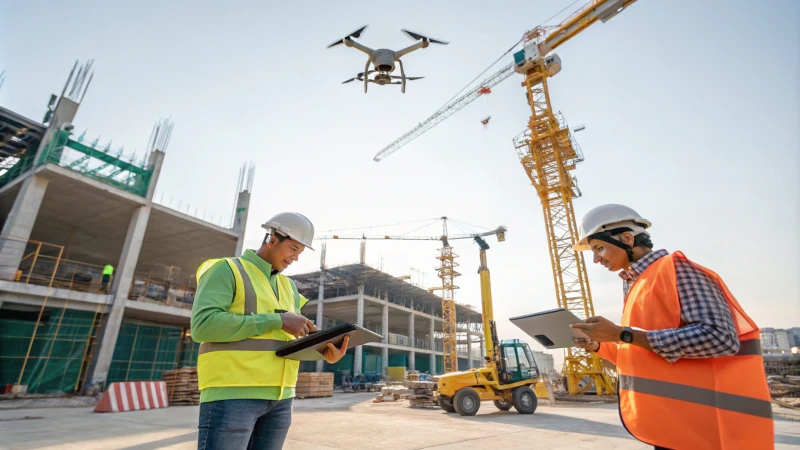
The Impact of Automation on Construction
Automation is transforming the construction industry by increasing efficiency and reducing human error. Automated machinery and robotics help in tasks like bricklaying, painting, and even site surveying. For instance, robotic bricklayers6 can lay bricks up to 10 times faster than human workers, significantly speeding up construction timelines.
Moreover, automation facilitates precision in work, which is crucial for maintaining quality standards. As a result, construction companies are seeing reduced labor costs and improved project delivery times.
Digital Tools for Project Management
Project management software has revolutionized how construction projects are planned and executed. Tools like Building Information Modeling (BIM) enable teams to collaborate more effectively by providing a 3D representation of the project. This visualization helps in identifying potential issues early on, reducing the likelihood of costly changes later in the project.
Additionally, cloud-based platforms allow real-time updates and communication between team members, ensuring that everyone is on the same page. Explore more about digital project management tools7 that enhance collaboration in construction.
| Feature | Benefits |
|---|---|
| Real-time Collaboration | Instant updates across teams |
| 3D Visualization | Early identification of design flaws |
| Cost Estimation Tools | Improved budgeting accuracy |
Sustainable Technologies in Construction
Sustainability is at the forefront of modern construction trends. Technologies such as prefabrication and modular construction are gaining popularity due to their efficiency and reduced waste. For example, off-site construction methods can cut down on site disturbance and help minimize the carbon footprint of building projects.
Moreover, smart technologies are being integrated into buildings to enhance energy efficiency. Automated systems can control heating, cooling, and lighting based on occupancy, significantly lowering energy consumption. Learn more about sustainable construction technologies8 that can benefit both the environment and your project budget.
The Role of IoT in Smart Buildings
The Internet of Things (IoT) is making its mark in modern construction by enabling the creation of smart buildings. These structures utilize interconnected devices that can monitor and manage building systems automatically. For instance, IoT sensors can track energy usage in real time, alerting managers to inefficiencies and prompting immediate action.
This integration of technology not only enhances operational efficiency but also improves the comfort and safety of occupants. Dive deeper into IoT applications in construction9 to understand how these innovations are shaping the future of building design.
Conclusion: The Future of Technology in Construction
While this section does not conclude our discussion on technology’s role in construction trends, it’s clear that the ongoing advancements will continue to influence every aspect of the industry. As new technologies emerge, the potential for improved safety, efficiency, and sustainability remains significant.
How Are Consumer Preferences Shaping the Future of Building Materials?
Consumer preferences are profoundly influencing the building materials market, steering it towards sustainability, innovation, and customization. How exactly are these shifts shaping industry practices?
Consumer preferences are reshaping the future of building materials by prioritizing sustainability, customization, and transparency. As eco-conscious choices gain traction, manufacturers must adapt to meet these evolving demands.
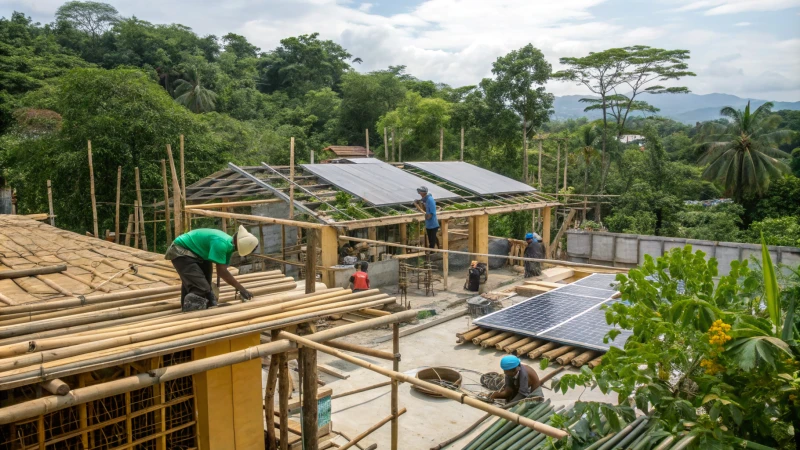
The Rise of Sustainable Materials
Consumer preferences are increasingly leaning towards sustainability. This shift is driven by a growing awareness of environmental issues and the impact of construction on the planet.
Many consumers now prioritize eco-friendly materials, which has led to a rise in demand for products that not only meet functional needs but also have a lower carbon footprint. For example, recycled aluminium is becoming a popular choice due to its recyclability and energy efficiency.
The emphasis on sustainability is reshaping product offerings in the building materials market, prompting manufacturers to innovate and develop more sustainable alternatives.
Innovative Material Technologies
As consumers seek materials that align with their values, companies are investing in research and development to create innovative building materials.
Technologies like smart materials, which can respond to environmental changes, are gaining traction. These materials not only enhance building performance but also appeal to a consumer base that values cutting-edge technology.
For instance, the integration of IoT with construction materials is allowing for smarter buildings that are more energy-efficient. By utilizing innovative technologies10, companies can attract forward-thinking consumers.
Customization and Personalization
Today’s consumers desire products that reflect their personal style and preferences. This trend is evident in the construction industry as well, where customization options are becoming essential.
Manufacturers are responding by offering tailored solutions, such as custom aluminium profiles that meet specific design requirements. This flexibility not only enhances the aesthetic appeal of buildings but also addresses the unique needs of various consumers.
| Feature | Consumer Demand | Industry Response |
|---|---|---|
| Sustainability | Eco-friendly materials | Development of recycled and green products |
| Innovation | Smart and efficient solutions | Investment in IoT-enabled building materials |
| Customization | Personalized designs | Offerings of bespoke material solutions |
Economic Factors Influencing Preferences
The economic climate significantly impacts consumer preferences in the building materials sector. As economic conditions fluctuate, so do consumer spending habits.
In times of economic uncertainty, consumers may prioritize cost-effectiveness and durability over luxury or aesthetic appeal. This shift forces manufacturers to adapt their strategies, ensuring that they provide value without compromising on quality.
By focusing on cost-effective solutions while still meeting sustainability goals, companies can cater to a diverse consumer base. This adaptability is crucial for staying competitive in a rapidly changing market.
The Importance of Transparency
With consumers becoming more conscious of the origins and manufacturing processes of products, transparency has become a critical factor in decision-making.
Brands that openly share information about sourcing, production methods, and environmental impact gain consumer trust and loyalty. Companies are therefore compelled to adopt transparent practices and communicate these efforts effectively through marketing channels.
In conclusion, understanding these dynamics allows stakeholders in the construction industry to align their strategies with evolving consumer preferences, ultimately shaping the future landscape of building materials.
What Are the Challenges of Adopting New Trends in Construction?
Exploring the challenges of adopting new trends in construction reveals significant obstacles companies face today.
Adopting new trends in construction presents challenges such as labor shortages, resistance to change, technology adoption issues, regulatory compliance, and financial constraints. Understanding these barriers is essential for effective implementation.

Understanding the Challenges of New Trends in Construction
Adopting new trends in construction can be a double-edged sword. While innovation promises efficiency and sustainability, it also brings a host of challenges. From labor shortages to technology adoption, the hurdles can be daunting.
1. Labor Shortages
The construction industry is grappling with significant labor shortages. With a growing number of skilled workers retiring, younger generations are not filling these roles at a sufficient rate. This lack of skilled labor impacts the ability to implement new technologies effectively.
- Example: Many construction firms are finding it difficult to adopt advanced building techniques due to the unavailability of trained personnel. Companies may need to invest in training programs, which can be costly and time-consuming.
2. Resistance to Change
There’s often resistance within organizations to adopt new methods or technologies. Employees may be accustomed to traditional practices and reluctant to shift to innovative techniques.
- Insight: Change management strategies are crucial here. Engaging employees through workshops and demonstrations can ease this transition. Firms that embrace a culture of innovation tend to have smoother adoptions of new trends.
3. Technology Adoption Issues
Integrating new technologies, such as Building Information Modeling (BIM) or smart construction tools, requires significant investment in both time and resources.
| Challenge | Description | Potential Solutions |
|---|---|---|
| Initial Costs | High upfront investment may deter companies | Explore financing options or phased implementation |
| Training Needs | Employees may require extensive training | Develop tailored training programs for staff |
| Compatibility | New tech may not integrate with existing systems | Conduct thorough compatibility assessments before purchase |
4. Regulatory Compliance
Construction projects must comply with various regulations that can hinder the adoption of innovative practices. Staying compliant while trying to implement new methods can be challenging.
- Consideration: Engaging legal and compliance experts early in the project planning can help navigate these complexities, ensuring that new trends meet all required standards.
5. Financial Constraints
Economic factors can heavily influence a company’s ability to adopt new trends. During downturns, construction firms may prioritize cost-cutting over innovation.
- Recommendation: Companies should create a strategic financial plan that allocates resources for innovation even during challenging economic times. This can help maintain a competitive edge.
Conclusion Without Conclusion
The challenges of adopting new trends in construction are multifaceted, requiring strategic planning and a commitment to overcoming resistance, investing in training, and ensuring compliance. For more on overcoming these barriers, explore our detailed guide11.
Understanding these obstacles is key for any construction firm looking to innovate and stay relevant in an evolving industry landscape.
How Can Professionals Stay Ahead of Trends in the Construction Industry?
Staying ahead in the construction industry requires proactive measures. Here’s how professionals can keep up with emerging trends and technologies.
To stay ahead of trends in the construction industry, professionals should embrace continuous learning, network extensively, keep up with technological advancements, focus on sustainability, and utilize market research tools.
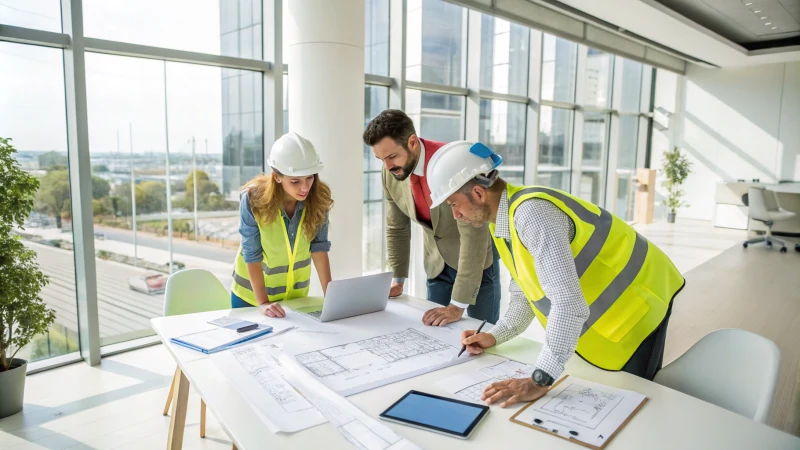
Embrace Continuous Learning
In an ever-evolving industry like construction, continuous learning is essential for professionals to stay relevant. This can be achieved through:
- Online Courses: Platforms like Coursera and edX offer courses on new technologies in construction.
- Certifications: Obtaining certifications in project management (PMP) or green building (LEED) can enhance skills and credibility.
- Workshops and Webinars: Participating in industry workshops can provide hands-on experience with emerging tools and techniques. Check out upcoming webinars12 for insights.
Network with Industry Experts
Building a robust professional network is crucial for staying informed about trends. Consider the following:
- Industry Conferences: Attend events like the International Builders’ Show to connect with peers.
- Local Networking Groups: Join local construction associations to meet professionals in your area.
- Online Forums: Engage in platforms like LinkedIn or specialized construction forums to share ideas and learn from others. For more on networking strategies, visit networking tips13.
Stay Updated with Technology
Technology is rapidly changing the construction landscape. Professionals should focus on:
| Technology | Description | Benefits |
|---|---|---|
| Building Information Modeling (BIM) | 3D modeling to improve project planning | Enhances collaboration and reduces costs |
| Drones | Aerial views for site surveying | Increases efficiency and safety |
| Smart Construction Tools | IoT devices for real-time monitoring | Improves project tracking and management |
Staying abreast of these innovations through technology resources14 will ensure you remain competitive.
Focus on Sustainability
With a global push towards sustainable practices, understanding eco-friendly materials and methods is vital:
- Green Building Certifications: Familiarize yourself with certifications like LEED or BREEAM that validate sustainable practices.
- Sustainable Materials: Keep up-to-date with materials that have lower environmental impact, such as recycled aluminium profiles. Learn more about sustainable options in eco-friendly materials15.
Utilize Market Research Tools
Accessing market research can provide valuable insights into current trends:
- Industry Reports: Use platforms like IBISWorld or Statista to access comprehensive reports on construction trends.
- Competitor Analysis Tools: Tools such as SEMrush can help understand what competitors are focusing on, allowing you to adapt accordingly. Explore more at market research tools16.
By implementing these strategies, professionals in the construction industry can effectively stay ahead of trends, ensuring they remain competitive and capable of meeting new challenges as they arise.
Conclusion
Explore key trends in building and construction, including sustainability, technology adoption, consumer preferences, and challenges faced by companies in this evolving industry.
-
This link offers insights into sustainable building practices that can enhance your knowledge of eco-friendly construction solutions. ↩
-
Discover how smart technology is integrated into modern construction for improved sustainability and efficiency. ↩
-
Learn about government regulations that promote sustainable practices in the construction industry. ↩
-
Understand current consumer trends regarding sustainable products in construction and how they affect market dynamics. ↩
-
Explore innovative materials that are shaping the future of sustainable construction. ↩
-
Discover how technology is revolutionizing construction practices and improving efficiency across projects. ↩
-
Learn more about digital tools that streamline project management processes in construction. ↩
-
Explore sustainable technologies that are being adopted in the construction industry for better environmental outcomes. ↩
-
Find out how IoT is transforming building management and enhancing operational efficiency. ↩
-
Explore how shifting consumer priorities are affecting the types of materials used in construction projects today. ↩
-
This link will provide you with insights into overcoming barriers in construction innovation, helping you strategize for effective implementation. ↩
-
Discover practical strategies for professionals in the construction industry to remain competitive by learning about current trends. ↩
-
Explore key insights and resources that will help you maintain your competitive edge in the construction sector. ↩
-
Learn about the latest technologies transforming the construction industry and how to leverage them effectively. ↩
-
Understand the importance of sustainability in construction and how to implement eco-friendly practices. ↩
-
Find out how market research tools can provide insights into industry trends and competitor strategies. ↩

